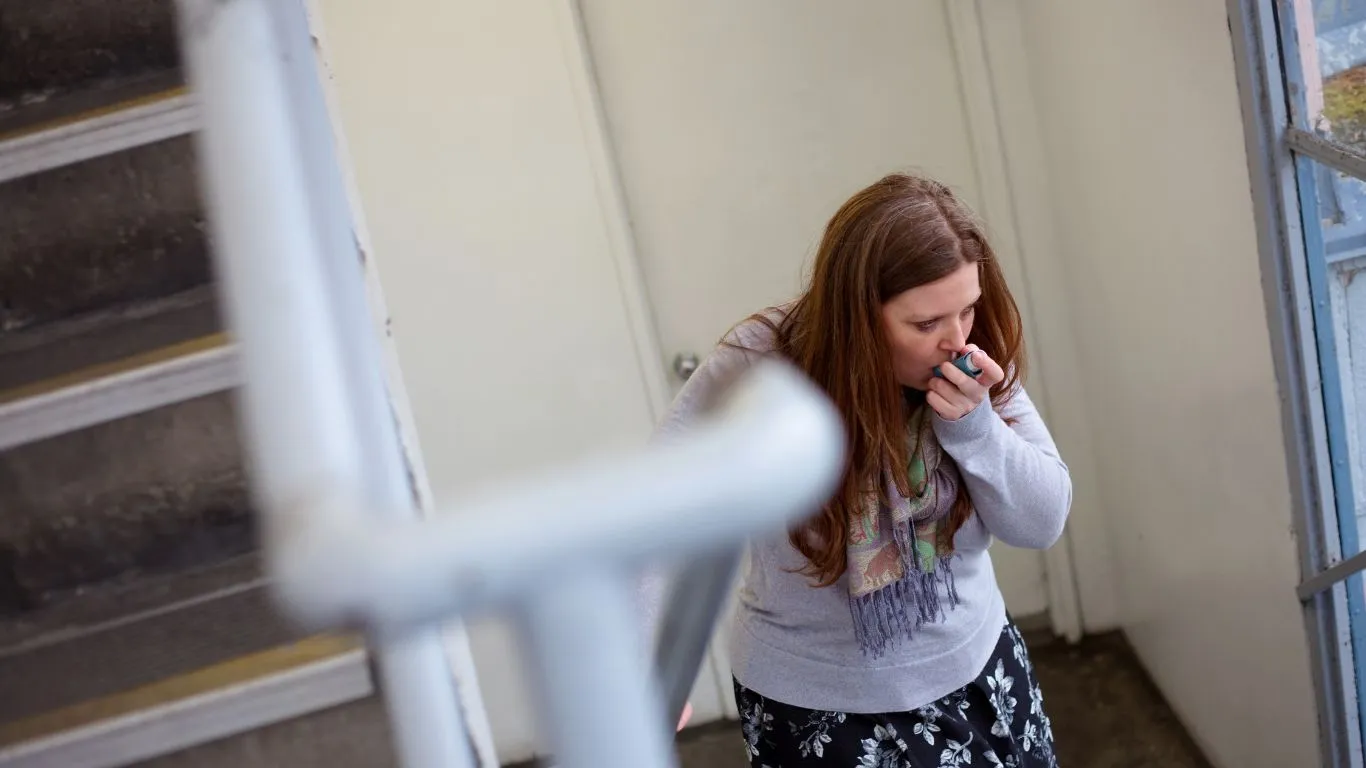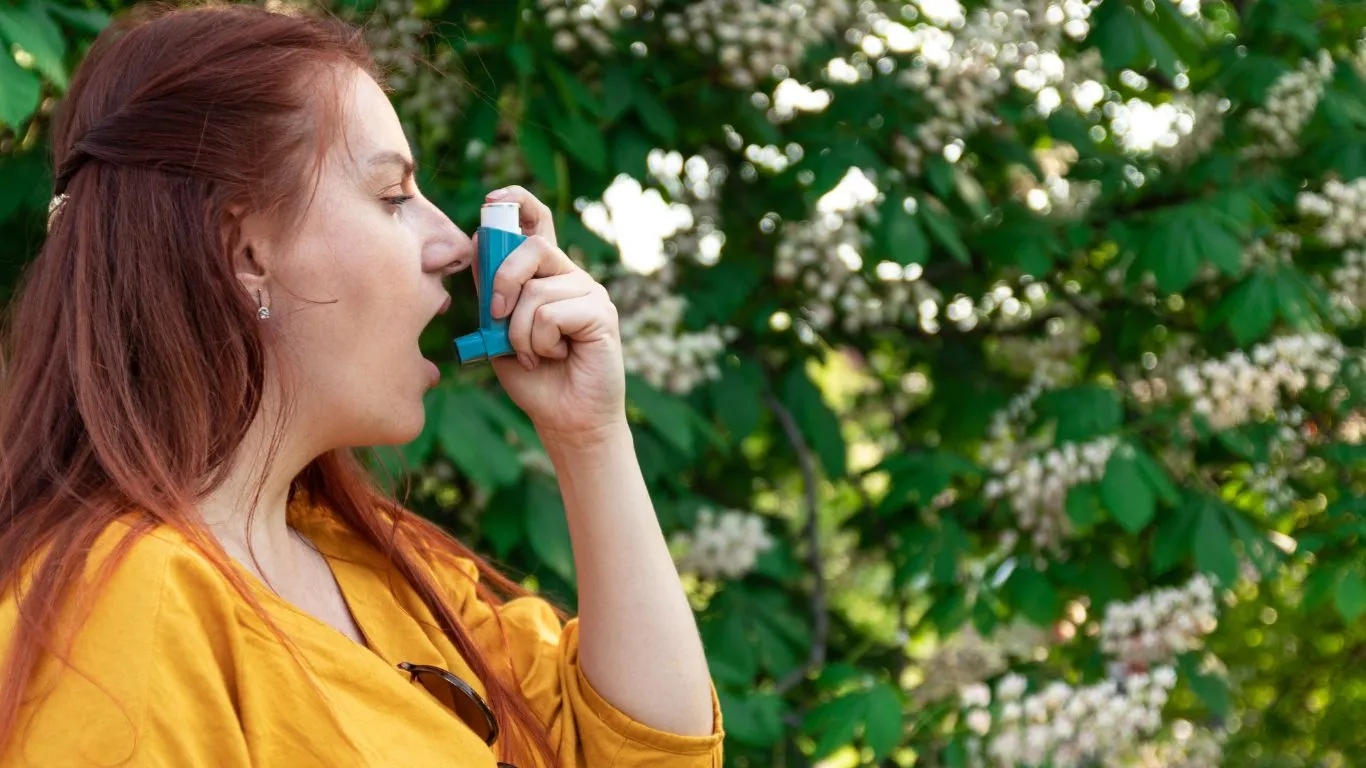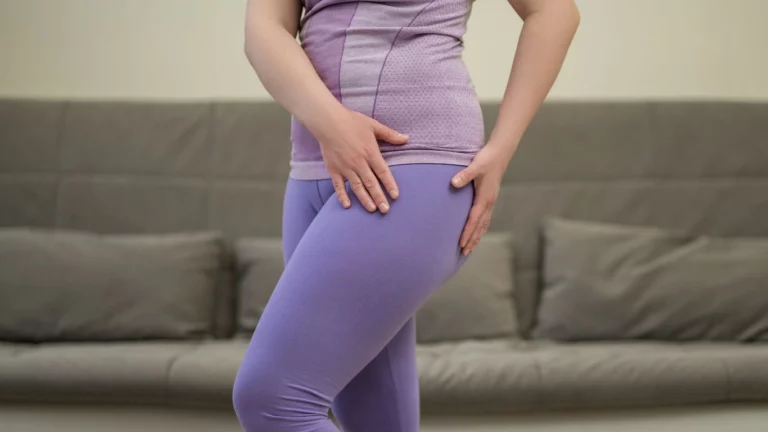“How Asthma Linked to Long COVID Impacts Your Recovery: Expert Insights”
Ever since the early waves of the pandemic, I’ve seen a noticeable uptick in patients struggling with a strange new pattern: lingering respiratory issues weeks—sometimes months—after recovering from COVID-19. What’s been especially concerning is how many of these folks also have a history of asthma. As a pulmonary nurse practitioner, I’ve had dozens of these conversations in clinic rooms, where patients say things like, “I thought I was over COVID, but I still can’t breathe like I used to.” That’s why we need to talk—really talk—about how asthma is linked to long COVID. This connection is becoming clearer, and if you’re living with asthma, or caring for someone who is, knowing what to watch for could make a big difference.
How Asthma and Long COVID Collide

When COVID Doesn’t Really Leave
Most of us think of viral infections as short-lived. You get sick, rest up, and bounce back. But COVID-19 has defied that norm in so many ways. One of the most frustrating things I hear from patients is, “I tested negative weeks ago, but my chest still feels tight,” or, “I can’t climb stairs without wheezing.” If that sounds familiar, you’re not alone. This phenomenon, now commonly referred to as long COVID or post-acute sequelae of SARS-CoV-2 infection (PASC), can include symptoms that linger for more than four weeks after the initial infection clears.
For people with asthma, the aftermath can be even more complicated. There’s this dance between airway inflammation, immune overreaction, and a viral hangover that just won’t quit. I’ve had patients with well-controlled asthma suddenly find themselves back to square one—or worse—months after their COVID test turned negative.
The Science Behind the Struggle
What’s going on under the surface? From what we know so far, it seems COVID can do a number on the immune system. It may leave behind a trail of inflammation in the lungs, possibly even reactivating or worsening underlying conditions like asthma. Some researchers believe the virus may actually damage the epithelial lining of the respiratory tract, making it easier for allergens and irritants to trigger asthma flares. Others point to the way long COVID disrupts the autonomic nervous system, which can affect breathing patterns and airway tone.
Now, I’m not here to throw a bunch of jargon at you. What matters is this: if your breathing hasn’t been the same since COVID—and you have asthma—there’s a reason, and it’s not all in your head.
What Asthma Looks Like Post-COVID

Not Just “Normal” Asthma
Here’s something I’ve noticed in my practice: people recovering from COVID often describe their asthma symptoms differently. It’s not always the usual wheezing or shortness of breath during exercise. Instead, they talk about persistent coughs that don’t respond to their usual inhalers, or chest discomfort that lingers long after their oxygen levels look fine.
That’s because post-COVID asthma can behave differently. I’ve seen patients who never needed a steroid inhaler before suddenly rely on one daily. Others who were well-controlled on seasonal meds are now on round-the-clock treatments just to keep their symptoms in check.
Symptoms to Watch For
So what should you keep an eye on? Here are some red flags I talk about with my patients recovering from COVID:
- Shortness of breath that feels new or worse than before
- Chest tightness that doesn’t improve with bronchodilators
- Persistent dry cough without mucus production
- Increased reliance on rescue inhalers (e.g., albuterol)
- Unusual fatigue even with minimal physical activity
It’s not uncommon to chalk these up to post-viral fatigue, but if you have asthma and you’re noticing these signs, it’s worth getting checked. In my experience, many people wait too long, thinking they just need more time to recover.
Why This Deserves More Attention

The Underreported Burden
Truth is, we’re only just beginning to understand the long-term impact of COVID-19 on chronic lung conditions. Asthma is already one of the most common respiratory illnesses worldwide, and now, with long COVID in the mix, we’re seeing a new layer of complexity that isn’t always addressed in mainstream coverage.
I’ve had patients dismissed by providers who said, “Your lungs sound clear,” or “Just give it time.” That’s not good enough. As someone who’s worked in pulmonary care for years, I can tell you: if your breathing feels off, that deserves attention. No stethoscope or CT scan can fully measure how you feel in your body day to day.
Who’s Most at Risk?
Although anyone with asthma can be affected, certain groups seem more vulnerable:
- People with moderate-to-severe asthma prior to infection
- Those who were hospitalized with COVID and needed oxygen or ICU care
- Individuals with poorly controlled asthma before getting sick
- Women and older adults, who statistically show higher long COVID rates
That said, I’ve also seen young, healthy patients with mild asthma wind up struggling for months. This isn’t just a concern for people with severe disease—it’s something all asthmatics should be aware of.
Managing Asthma After Long COVID

It’s Not About Starting Over—It’s About Adjusting
One of the biggest questions I get from patients is, “Do I have to start my asthma treatment from scratch?” And I totally get that fear. But here’s the good news—it’s usually not about throwing everything out the window. It’s more about recalibrating. Think of it like your lungs got knocked off their rhythm, and now we’ve got to help them find their groove again.
For many, this might mean stepping up from a low-dose inhaled corticosteroid to a combination therapy, or adding a leukotriene modifier if inflammation seems persistent. I’ve even seen some patients benefit from short-term oral steroids when symptoms spike. The key is personalizing your plan. If you’re not seeing improvement with your usual asthma meds post-COVID, it’s not your fault—they just might not be cutting it anymore in this new context.
Managing post-COVID asthma isn’t just about meds. It’s a whole-body approach. Here’s what I usually go over during consults:
- Track your symptoms — even minor changes. I recommend using a daily log or an asthma tracker app.
- Get a peak flow meter — it’s a small tool, but super useful to measure how well your lungs are doing day-to-day.
- Hydration matters — keeping those airways moist can reduce irritation.
- Watch for triggers — your old triggers may still be around, but some new ones (like scents, humidity, or stress) might show up post-COVID.
- Don’t skip follow-ups — I can’t stress this enough. We need to monitor and adapt as you recover.
These aren’t silver bullets, but small changes can make a huge difference when you’re trying to regain control of your breathing. You know your body best, and it’s okay to advocate for yourself.
What to Ask Your Healthcare Provider

Don’t Be Afraid to Speak Up
I’ve had patients tell me, “I don’t want to be a bother,” or “They said it’s just anxiety.” Please don’t settle for that. You deserve answers. And if your doctor isn’t familiar with long COVID asthma links, bring it up. Ask questions. Ask for referrals. Ask for a pulmonary function test. You’re not overreacting—you’re advocating.
Here are a few questions I usually recommend bringing to your appointment:
- Can we reassess my asthma action plan based on how I’ve been feeling post-COVID?
- Should we do any lung function testing like spirometry or FeNO?
- Would a short course of steroids help reduce this inflammation?
- Do you think I might be experiencing post-viral airway hyperreactivity?
- Should we consider a referral to a pulmonologist?
Most providers want to help—but the more information you bring, the better they can support you. And if you feel dismissed, keep pushing. Find someone who listens. I’ve had patients find enormous relief once we simply changed how we framed their symptoms.
Long COVID and Asthma in Real Life

Stories From the Clinic
Let me tell you about one of my patients—we’ll call her Maya. She was 36, a teacher, with mild intermittent asthma that only flared up during spring. After getting COVID, she never fully bounced back. Two months later, she was still wheezing during her morning walks and relying on her rescue inhaler three to four times a week.
When she came to see me, she was frustrated and scared. Her primary care provider told her she just needed to “reduce stress.” We did a full workup, adjusted her meds, and within weeks, she felt dramatically better. What helped her most? Just knowing she wasn’t imagining it—that this post-COVID breathing struggle was real, and manageable.
Then there was Jordan, a 64-year-old retired firefighter. His asthma had been stable for years, but after a severe bout of COVID that put him in the hospital, he was waking up at night gasping for air. His case took longer—he needed pulmonary rehab and we trialed a biologic for better control—but today, he’s walking 2 miles a day again.
You’re Not Alone
If you’re feeling like you’re the only one dealing with this, let me just say—you’re definitely not. I’ve seen this pattern in people from all walks of life. The connection between asthma and long COVID is very real, and you’re not weak or exaggerating if it’s taking longer to get back to normal.
There’s a lot we’re still learning, but you don’t have to wait for perfect science to start healing. With the right tools, support, and treatment plan, many people do find relief and even stronger asthma control than they had before.
When to Seek Help Right Away
Know the Red Flags
I always tell patients, listen to your body—especially now. If you’re not sure whether to call your provider, here’s a quick list of signs that mean don’t wait:
- Frequent nighttime awakenings due to coughing or shortness of breath
- Rescue inhaler use more than twice a week
- Chest pain or pressure that feels unfamiliar
- Oxygen levels dropping below 94% at rest
- Worsening fatigue that makes daily tasks nearly impossible
If anything on that list sounds familiar, please don’t tough it out. You deserve to feel better, and there’s help out there. Whether it’s adjusting your meds, doing more advanced testing, or exploring newer treatments, there are options—and you’re not stuck.
Emerging Treatments and Research on Asthma Linked to Long COVID

Science Is Catching Up—But Slowly
One thing I tell my patients all the time: just because your doctor hasn’t heard of something, doesn’t mean it’s not real. The medical world is still trying to wrap its head around long COVID—especially how it interacts with pre-existing conditions like asthma. I’ve been keeping a close eye on studies and clinical trials, and while we’re not there yet in terms of a silver bullet, there’s progress.
Some studies have started to show patterns: patients with asthma are more likely to experience lingering respiratory symptoms after COVID-19. According to early data from NIH and Health.com, inflammation markers in long COVID patients overlap significantly with what we see in uncontrolled asthma, which might explain the stubborn symptoms.
There’s also growing interest in biologics—especially for people whose asthma becomes more severe or unpredictable post-COVID. I’ve seen patients respond well to medications like dupilumab or mepolizumab, which help dial down the overactive immune response that can linger long after infection. If that’s something you’ve never discussed with your provider, now might be the time to bring it up.
Non-Medication Tools That Actually Help
Not every tool has to come from a prescription pad. I’m a big fan of holistic support—especially when it’s backed by evidence. These are a few non-pharmaceutical strategies I’ve recommended to patients that really moved the needle:
- Pulmonary rehab programs — These structured, therapist-led programs help retrain your breathing and rebuild stamina. They work wonders post-COVID.
- Breathing exercises — Diaphragmatic and pursed-lip breathing can help reduce hyperinflation and calm your nervous system.
- Air quality management — Investing in a HEPA filter and avoiding indoor irritants (like candles or cleaning sprays) can go a long way.
- Nutrition and gut health — Inflammation isn’t just in the lungs. A healthy, anti-inflammatory diet may support immune balance post-viral infection.
I’ve even had a couple of patients swear by adding yoga and gentle tai chi to their routines. And honestly? If it helps you breathe better and feel more in control—do it.
What Long COVID Asthma Feels Like—And Why That Matters

Your Experience Is the Data
We often treat medicine like it’s all numbers and charts—but as a pulmonary NP, I’ve learned that patients’ stories carry just as much weight. I can’t count how many people with long COVID-related asthma symptoms have told me they were dismissed because their chest X-ray looked “fine” or their spirometry was “normal.”
Let me be clear: those tests are tools—not the full picture. I’ve had patients who barely showed changes on imaging but were clearly struggling to breathe and function. That’s why we, as clinicians, have to listen differently. And why you, as a patient, need to keep telling your story.
The more patients speak up, the more visibility this condition gets. So if you’re tired of feeling brushed off, keep advocating. Your voice matters. And it’s helping shape how the medical community learns about this evolving link between asthma and long COVID.
Why Representation in Research Is Crucial
There’s another piece to this puzzle: many of the early studies didn’t include diverse patient populations. I’ve noticed that women, especially women of color, are underrepresented in research around long COVID and chronic illness. Yet these are the same folks I see in my clinic who are most affected.
We need more inclusive studies. We need more funding. And honestly, we need more real-world providers to speak out about what we’re seeing. Because I can tell you—this isn’t rare. It’s just under-discussed.
Hope, Healing, and Moving Forward
This Isn’t the End of the Story
If there’s one thing I want you to take away from all of this, it’s that there is hope. I know how discouraging it can be to feel like you’re never going to breathe like you used to. But I’ve watched so many people recover—not overnight, but steadily.
With the right mix of treatment, advocacy, and support, it is possible to find a new normal that works for you. It might take some trial and error, and you might need to rebuild trust with your body and even with the medical system—but progress is real. And you’re not doing it alone.
What I Wish More People Knew
I wish more folks knew that asthma isn’t just “mild” or “manageable” for everyone. When layered with long COVID, it can become unpredictable and scary. I wish more providers paused to ask, “How are you really feeling?” instead of checking boxes.
And most of all, I wish patients didn’t feel like they had to prove their suffering to be taken seriously. If you’ve made it this far in the article, I see you. Keep going. Your lungs may be healing slower than you’d hoped, but healing is still happening.
References
Disclaimer
The information in this article is for educational purposes only and should not be used as a substitute for professional medical advice, diagnosis, or treatment. Always consult with a qualified healthcare provider regarding any medical condition, especially if symptoms persist or worsen. While I draw from clinical experience as a pulmonary nurse practitioner, every case is unique and should be evaluated individually.

Bianca Nala is a compassionate Nurse Practitioner with a strong background in primary and respiratory care. As a health writer for Healthusias.com, she combines her clinical expertise with a talent for clear, relatable storytelling to help readers better understand their health. Bianca focuses on topics like asthma, COPD, chronic cough, and overall lung health, aiming to simplify complex medical topics without losing accuracy. Whether she’s treating patients or writing articles, Bianca is driven by a single goal: making quality healthcare knowledge accessible to everyone.






